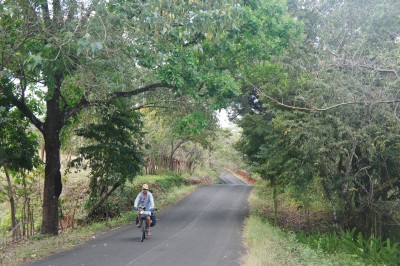
Panama (Part 2): Backroads to the Mangoes
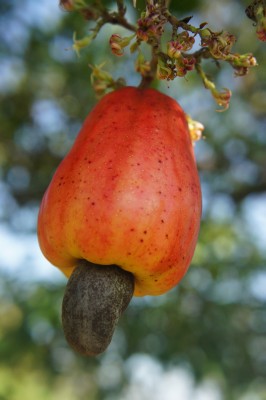
We left Ocu after resting there an extra day and befriending a group of seniors that took excellent care of us. We returned to the Pan American highway just 11km from where we had left it a week earlier, completing a loop in the Azuero Peninsula. This time the road had wide shoulders, clear of the common glass shards, not much traffic, and was a joy to ride.

We passed through Santiago, the third largest city in Panama and took a quick look at the “parque” – the main plaza. We left the highway once again to cycle towards Sona, pronounced like the word for prostitute in Hebrew, which we thought was rather fitting. This small town was the ugliest we had visited in Panama, at least at first glance. The main road was under construction – a dusty mess, the buildings were dilapidated, and despite having five supermarkets there was hardly a piece of fruit or yoghurt to be had.
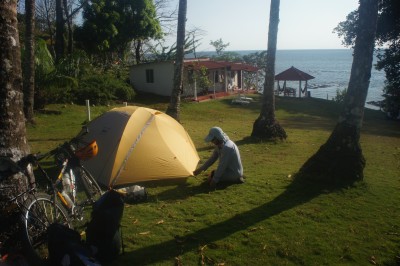
The 65km long detour to Santa Catalina felt like a trip to the end of the world. The road became progressively smaller and quieter until it was just a narrow country lane that roller coasted into town. Our arrival was a bit of a shock after the quiet road and spending more than a week in the Azuero with barely a tourist or English signage in sight.
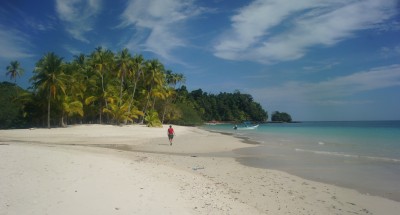
We camped on a lawn overlooking the ocean, amongst a grove of tall coconut trees in Celina’s backyard, where she fed us delicious and cheap plates of fish that she had caught. The next day we went on a trip to Isla Coiba National Park where we snorkeled right around a tiny island and enjoyed a few beautiful beaches. There were hundreds of hermit crabs on the beach, basically crawling shells with feet, in many different shapes and colours. Two kids taught us how to surf the next day, and we discovered what a delight it is to stand up on a fiberglass board zooming through the ocean. We spoke to the owners of the popular bakery and Maya even got a tempting job offer, but she had to decline.
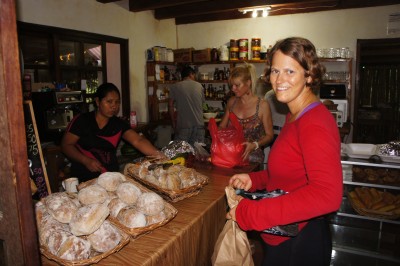
We backtracked to Sona, and this time the town didn’t seem so bad, perhaps it’s an acquired taste. On the next stretch of road we saw about equal numbers of cars and machete carrying cowboys wearing the classic Panama hats. The views of the ocean, below us and stretching along the horizon, delighted us while we munched on a pineapple. I often carry a variety of fruit in my panniers (I like to be prepared), and this sometimes becomes ridiculous, such as the time when I was carrying three papayas.
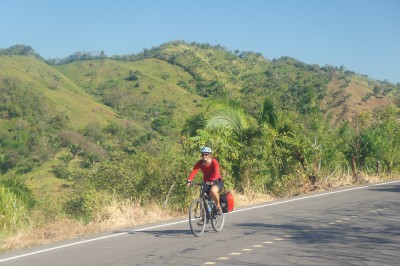
Las Lajas was much smaller in reality than on the map, so we asked some locals if we could camp in their yard, which was complete with outdoor shower and outhouse. In the morning the riding felt effortless, and I picked a few wild papayas, a lucky find. Later we passed extensive pineapple fields. It turns out that pineapples grow in all sorts of shapes and sizes and only the classically shaped ones are deemed good enough to export. Young kids stood at the side of the road, selling fish that their father had caught that morning, but they could barely lift. Then the road deteriorated into a potholed mess with no shoulders and large trucks thundering past us.
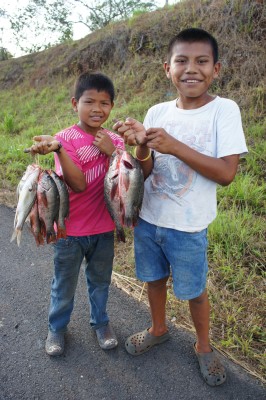
Our next stop was in David, the second largest city in Panama, perhaps named after my dad. It didn’t take long to notice that almost everyone in David appears to be selling fruit, from guys in pickup trucks stacked high with watermelons to a row of yellow papayas on the counter at the laundromat. I was mesmerized by the indigenous women’s dresses which seem to come in all colours from bright yellow or purple to a stately black. The local snack is fruit syrup on ice, shaved by hand from a large block.
On our final day in Panama we followed back roads to the border at Paso Canoa. We passed through large banana plantations and the palm oil farms that are replacing them. Clouds appeared in the sky, a happy occasion since they block the sun, especially appreciated in the hottest area in Panama (or so they say). A local gave us two coconuts, and two more for the way, a common occurrence, but these were the sweetest so far. Arriving to the border, we could have easily just walked through – it took us some time to even find where to get our passports stamped. As we crossed the border, I had a big smile on my face – there were mangoes everywhere.
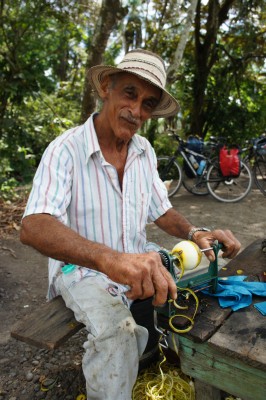
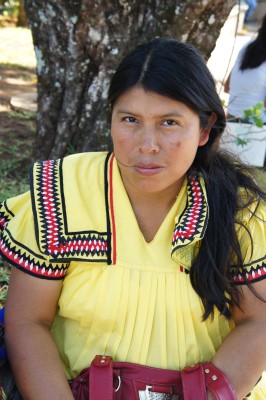
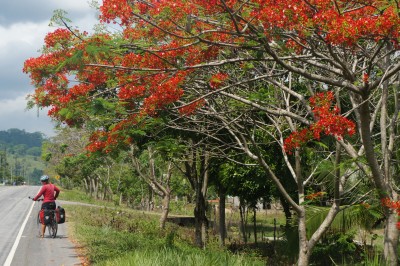
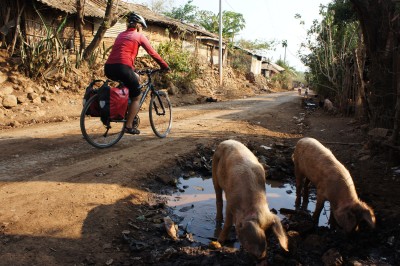

5 Comments
Peta Kaplan
Great looking beaches. You are pretty close to Nicaragua now…. See you soon!!
Yuval Berger
Thanks Maya and Gili, for the beautiful narrative and images. The one which has stayed in my mind was the picture of the fried fish meal. I could actually smell, the place.
Thanks
Yuval
Pingback:
Michelle
WOW – fantastic trip! the two of you look happy and well fed!
but why are you up at 5:45 – are you on a tight schedule
We miss you!
Gili
No, we’re not on a tight schedule.. It is often hot from 8:30am, and the early mornings are much cooler and excellent for cycling. Let’s talk soon.